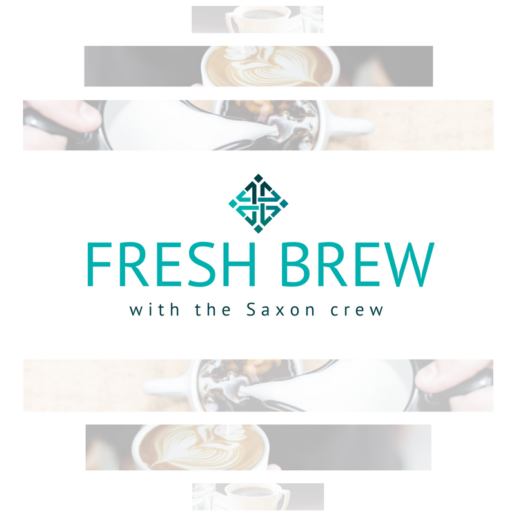The Saxon Advisor - April 2020
Compliance Check
Easy to Digest, Monthly Need-to-Knows
The Current 30
APRIL 1: Required Minimum Distribution. Deadline to take first RMD for terminated participants following attainment of age 70 1/2 or retiring after 70 1/2 in prior calendar year.
APRIL 1: Form 1099-R. Deadline for employers to file electronically with the IRS.
APRIL 15: Excess Contribution Refunds (Over IRS Limit). Deadline to return excess retirement plan deferrals for the previous plan year.
APRIL 30: Annual Audit Time! For large 5500 filers, it is time to select an auditor and schedule your annual audit.
A Look Forward
MAY 15: Participant-Directed Plans. Benefit Statements for participant-directed plans and Participant Fee Disclosures are due.
JUNE 30: Eligible Automatic Contribution Arrangement (EACA). Corrective distributions for failed ADP/ACP tests must be made within 6 months after the Plan Year end.
JULY 31: Form 5500 and Form 5558. The deadline for the 2019 plan year’s Form 5500 and Form 5558 (5500 filing extension to October 15th).
JULY 31: Form 8955-SSA. Deadline to file Form 8955-SSA and the terminated vested participant statements for the plan year of 2019 (unless extended by Form 5558).
JULY 31: Form 5330. Deadline to file for excise tax on failed ADP/ACP test.
In this Issue
- It’s Annual Audit Time! For large 5500 filers, it is time to select an auditor and schedule your annual audit April 30, 2020.
- Benefit Statements for participant-directed plans and Participant Fee Disclosures are due May 15, 2020.
- Fresh Brew Featuring Olivia Childs
- This month’s Saxon U: How To Legally Work With Gig And Contract Workers
- #CommunityStrong: Donation Drive for Families Forward
How to Legally Work With Gig and Contract Workers
Join our May Saxon University as Pandy Pridemore discusses how to legally work with Gig and Contract Workers
What You Need to Know: The SECURE Act
Bringing the knowledge of our in-house advisors right to you...
In December of 2019, President Donald Trump passed the Setting Every Community Up for Retirement Enhancement Act or SECURE Act. Some of the Act aims at making it easier for small business owners to create more affordable and easier to administer retirement plans.
“There is a lot of hype in the government and media about how the SECURE Act will make it cheaper to sponsor a plan. I don’t know if recordkeepers could lower their annual costs any more than they have over the last 8 or 9 years; but it definitely will provide lower start-up costs through the tax credits, and make it easier to administer plans if utilizing a Safe Harbor approach or a PEP.”
Fresh Brew Featuring Olivia Childs
"Be sure to do the follow-up after a conversation!"
Olivia Childs is a Saxon Senior Solutions Specialist whose favorite catchphrase is, “We rise by lifting others,” by Eleanor Roosevelt. We invite you take a moment to get to know Olivia!
Olivia’s favorite brew is Chai Tea Latte. She admits that enjoying her drink while relaxing at Half Day Cafe and snacking on an Everything Bagel is hard to beat!
This Month's #CommunityStrong:
Donation Drive for Families Forward
It's time to work together to help meet a top priority need of a valued community program and the families they serve.
Are you taking a strategic approach to your financial big picture?
Saxon creates innovative strategies that will help you figure out how to get there, plan for the risks along the way, navigate complex tax code and understand the steps you need to take to protect and secure your future.
Monthly compliance alerts, educational articles and events
- courtesy of Saxon Financial Advisors.

Nearly a third of workers 'actively avoid' going to HR with problems
Did you know: nearly 30 percent of employees avoid going to their HR departments with their problems. Read this blog post to learn more.
Dive Brief:
- One-fifth of workers don't trust HR, and nearly a third (30%) actively avoid going to HR with problems, according to a new survey of more than 500 employees and 300 HR professionals conducted by Zenefits' Workest.
- Of the workers who avoid going to HR, 35% said it's because they don't trust HR to help, and 31% said they feared retaliation. Some of the reluctance may be due to a negative perception of HR or their employers overall; 23% of respondents said they had witnessed or experienced "poor HR, hurtful management, or discrimination." Thirty-eight percent of employee respondents felt that HR did not equally enforce company policies across all employees; 18% of that group said they believed managers received special treatment.
- Most of the HR respondents said that fewer than 30% of complaints they received in the last two years resulted in any disciplinary action. According to a Workest blog post about the survey, "Having less than a third of cases result in disciplinary action led employees to wonder — if they bring complaints forward, will anything even result?"
Dive Insight:
Some employees may have an inaccurate perception of what HR does, but the survey makes clear that workplace culture-building efforts still leave a lot to be desired — particularly when it comes to employees and HR working together to stop harassment.
According to a recent Emtrain study, most employees (83%) would not report harassment if they saw it. Additionally, similar to the findings in the Workest survey, 41% of workers were not confident that management would take a complaint seriously.
Nonetheless, culture is becoming a priority for some business leaders, many of which are hiring chief people officers both to help remedy toxic environments and also as a proactive strategic talent measure.
Investing in retention and culture makes sense for companies' bottom lines: In the past five years, the turnover cost of a toxic work environment was more than $223 billion for U.S. employers, according to Society for Human Resource Management research.
In order for culture efforts to bear fruit, they have to be more than mere lip service. Some believe business leaders and corporate directors are not making real efforts toward these goals. In a recent Accenture survey, business leaders reported financial performance and brand recognition as their most important priorities. Just over a third (34%) of the leaders surveyed ranked diversity as a top priority.
SOURCE: Carsen, J. (02 April 2020) "Nearly a third of workers 'actively avoid' going to HR with problems" (Web Blog Post). Retrieved from https://www.hrdive.com/news/nearly-a-third-of-workers-actively-avoid-going-to-hr-with-problems/575303/
IRS promises full, immediate reimbursement for coronavirus leave
As employers are becoming subjected to the Families First Coronavirus Response Act (FFCRA), questions regarding reimbursements are being raised. Read this blog post to learn more.
Dive Brief:
- Employers subject to the Families First Coronavirus Response Act (FFCRA) will be eligible for two new refundable payroll tax credits that will "immediately and fully reimburse them" for complying with its paid leave mandate, the IRS and U.S. Department of Labor (DOL) announced March 20.
- The credits are designed to grant 100% reimbursement for paid leave pursuant to the FFCRA, DOL said. Health insurance costs are included in the credit. Employers face no tax liability and self-employed individuals will receive an equivalent credit. For the law's emergency Family and Medical Leave Act (FMLA) leave, the credit is equal to two-thirds of the employee's regular pay, capped at $200 per day or $10,000 in the aggregate. Up to 10 weeks of qualifying leave can be counted towards the credit.
- The credit available for FFCRA's paid sick time differs depending on how an employee uses the time. If the employee is unable to work because of a quarantine or self-quarantine or has COVID-19 symptoms and is seeking a medical diagnosis, employers may receive a refundable sick leave credit for sick leave at the employee's regular rate of pay, up to $511 per day and $5,110 in the aggregate, for a total of 10 days. If the employee is caring for someone with COVID-19, or is caring for a child because the child's school or child care facility is closed or otherwise unavailable due to COVID-19, employers may claim a credit for two-thirds of the employee's regular rate of pay, up to $200 per day and $2,000 in the aggregate, for up to 10 days.
Dive Insight:
The announcement, made in conjunction with the U.S. Department of the Treasury, should be welcome news to employers affected by the FFCRA, Littler Mendelson shareholder Jeff Nowak told HR Dive in an interview.
Reacting to initial news of the law's enactment, Nowak and others expressed concerns. Though the FFCRA specified that employers would be eligible to receive tax credits, Nowak said this week that many feared the timing of the credit would be "far too late … particularly for small businesses that would be out of business by this time next year." The DOL's assurance of prompt payment may ease such fears.
As news continues to develop around the FFCRA, DOL has added additional clarifications for employers to note. First, the agency stated Tuesday that the FFCRA would be implemented April 1, 2020. In the same document, it added more information around its plan to codify exemptions for certain private entities employing fewer than 50 employees. Employers choosing to seek this exemption may need to document why their business meets the criteria for an exemption. These criteria will be set forth by DOL in future regulations.
"You should not send any materials to the Department of Labor when seeking a small business exemption for paid sick leave and expanded family and medical leave," DOL said.
The agency also previously announced that it would observe a 30-day temporary period of non-enforcement of the FFCRA once the law takes effect April 1. This non-enforcement would be in effect so long as the employer in question "has acted reasonably and in good faith" to comply with the law, DOL said, but sources previously told HR Dive that employees could still bring legal action against certain non-complying employers.
Nowak noted that the tax credit provision would allow employers to recoup the maximum paid leave costs provided for by the FFCRA. In other words, if an employer provides additional paid leave beyond what is mandated by the FFCRA for a given scenario, that employer should not expect to receive a reimbursement for the cost of providing those additional amounts of leave, Nowak said.
The DOL document released Tuesday also specifies how employers should determine whether they meet the FFCRA's classification of employing fewer than 500 employees. According to Nowak, employers should look at their headcount at the time an employee requests leave. "It will be an additional burden to the employer's HR department," Nowak said. "You will be calculating coverage whenever an employee requests FMLA or paid sick leave."
DOL said it will provide a model notice of the FFCRA's requirements — which employers will then need to post in a conspicuous place on their premises — no later than March 25. Finally, the agency has said it will hold a "national online dialogue" allowing employers to comment on the DOL's compliance materials and outreach strategies related to the implementation of the FFCRA through March 29.
SOURCE: Golden, R. (25 March 2020) "IRS promises full, immediate reimbursement for coronavirus leave" (Web Blog Post). Retrieved from https://www.hrdive.com/news/irs-promises-full-immediate-reimbursement-for-coronavirus-leave/574881/
Fresh Brew With Olivia Childs
Welcome to our brand new segment, Fresh Brew, where we will be exploring the delicious coffees, teas, and snacks of some of our employees! You can look forward to our Fresh Brew blog post on the first Friday of every month.
“Be sure to do the follow-up after a conversation! Clients want to know they are understood and have options.”
Olivia Childs is a Senior Solutions Specialist.
New to the insurance industry, Olivia hopes to expand her knowledge in Medicare Insurance. She graduated from the University of Cincinnati with a degree in Organizational Leadership. She was involved in the Human Resources department and a member of HR Succeeds, a mentor program with professionals and students.
Olivia has been volunteering her free time at the Cincinnati Epilepsy Foundation since High School and her favorite catchphrase is, “We rise by lifting others,” by Eleanor Roosevelt.
Olivia will marry her fiance, Cory, in June 2020. They enjoy hiking and cycling together, as well as have two cats, Braun & Gus.


Chia Tea Latte
Olivia loves to drink her favorite brew, Chai Tea Latte, while at Half Day Cafe!

Everything Bagel
Olivia loves sipping on her favorite brew, a Chai Tea Latte, while snacking on an Everything Bagel!
Gig workers win right to unemployment benefits
While many employees are fighting to keep their jobs during the coronavirus pandemic, gig workers are fighting for their rights to unemployment benefits. Read this blog post to learn more.
New York Postmates food delivery drivers and potentially thousands of other gig workers can receive unemployment benefits at a time of historic job losses, following a ruling by the state’s highest court that they are company employees.
The New York Court of Appeals said Thursday that Postmates “could not operate” without its couriers, rejecting the company’s argument that it simply operates a platform connecting drivers to customers.
“Today’s decision is a huge victory for thousands of gig workers across New York,” said New York Attorney General Letitia James. “The courts have solidified what we all have known for a while: delivery drivers are employees and are entitled to the same unemployment benefits other employees can obtain.”
Postmates and other platform companies like Uber and Lyft have long claimed their workers are self-employed entrepreneurs rather than employees entitled to minimum wage, overtime, unemployment and other protections. They have vigorously contested lawsuits and legislation seeking to reclassify their workers.
The coronavirus pandemic has put unprecedented pressure on gig-economy workers. The stay-at-home orders now in force in much of the nation have sidelined vast numbers of them while others have kept driving despite the risk of spreading or catching the contagion.
The ruling on Thursday reverses a lower court decision finding Postmates wasn’t the employer of delivery driver Luis Vega, who was kicked off the platform. An administrative board had previously found that Vega was eligible for unemployment insurance benefits as a Postmates employee.
“While couriers decide when to log into the Postmates’ app and accept delivery jobs, the company controls the assignment of deliveries by determining which couriers have access to possible delivery jobs,” the court said.
“The Court of Appeals has confirmed what we have said all along: app-based employers have been misclassifying workers and denying them their rights for no other reason than their own bottom-line,” Mario Cilento, president of the New York State AFL-CIO, said in a statement. “The harm caused by this injustice has never been clearer than during this pandemic.”
San Francisco-based Postmates said that, while it disagreed with the decision, it was in favor of modernizing worker classifications and was willing to work with New York to achieve that.
“We fully support designing a responsible framework that allows New Yorkers to choose if, when, where, and for how long they work, while also providing them access to the benefits and services they deserve,” the company said.
SOURCE: Bloomberg News. (27 March 2020) "Gig workers win right to unemployment benefits" (Web Blog Post). Retrieved from https://www.benefitnews.com/articles/gig-workers-win-right-to-unemployment-benefits
Medicare 101: A Quick Guide For Employers
Medicare is a governmentfunded health insurance program for those aged 65 and above, those under 65 with certain disabilities, and those with End State Renal Disease (ESRD) or Amyotrophic Lateral Sclerosis (ALS). Employers that offer group health insurance plans to their employees have an interest in learning how employees’ entitlement to Medicare benefits can affect the administration of those plans. We sat down to speak with Olivia Childs, a Senior Solutions Licensed Agent at Saxon Financial Services, to get some more information on Medicare for beginners.
When asked about the number one thing to keep in mind when trying to figure out your first steps with Medicare, Olivia commented, “Ask a licensed agent for assistance. Advertisements can be confusing, and everyone wants to make the right choice. Using my expertise, I take the fear out of the decision making, so my clients can make an informed decision concerning their healthcare.”

What are the different parts of Medicare?
- Part A is hospital insurance that helps cover inpatient care in a hospital, skilled nursing facility care, inpatient care in a skilled nursing facility (not custodial or long-term care), hospice care, and home health care. Most U.S. citizens qualify for zero premium Medicare Part A upon attainment of age 65.
- Part B is the actual ‘health’ coverage under Medicare. It helps cover physician visits, screenings and other aspects of out-patient medical care. Medicare Part B has a monthly premium to cover outpatient care which increases annually.
- Part C is a Medicare Advantage Plan. This is a plan that offers all of the benefits of Parts A and B, sometimes with Part D, through a private health insurer.
- Part D was established in 2003. Part D of the Medicare Program provides prescription drug coverage to Medicare beneficiaries. This drug coverage may be available in a standalone Prescription Drug Plan (PDP) or integrated with a Medicare Advantage Plan.
What is Original Medicare?
With original Medicare, your coverage is through Parts A and B. Part A includes inpatient and/or hospital coverage, while Part B includes outpatient and/or medical coverage. Through this type of Medicare, you are provided a red, white and blue card to show your providers when receiving treatment. While most doctors take Original Medicare coverage, it is important to check whether your provider participates. If you visit one that does,
then your Medicare card will limit how much you can be charged.
Through Original Medicare, you are responsible for a 20% coinsurance if you see a participating provider and after meeting your deductible. Some basic, key things to know about Original Medicare include that:
- For Medicare Supplement Insurance, you have the choice to pay an additional premium for a Medigap to cover Medicare cost-sharing.
- You do not need referrals to see a specialist.
- For drug coverage, you must sign up for a standalone prescription drug plan.
- It does not cover vision, hearing, or dental services.
What is Medicare Advantage?
Unlike Original Medicare, Medicare Advantage are private plans that contract with the federal government to provide Medicare benefits. These plans are also known as Medicare private health plans or Part C. Some of the most common types of plans are:
- Health maintenance Organizations (HMOs)
- Preferred provider Organizations (PPOs)
- Private Fee-For-Service (PFFS)
If you join a Medicare Advantage Plan, you will not use the red, white, and blue card when you go to the doctor or hospital. Instead, you will use the membership card your plan sends you to get health services covered. Plans must provide the same benefits offered by Original Medicare, but they may apply different rules, costs, and restrictions. They also may offer certain benefits that Medicare does not cover. Just like Original Medicare, there are some key items to be aware of:
- Your cost-sharing varies depending on plan. Usually pay a copayment for in-network care. Plans may charge a monthly premium in addition to Part B premium.
- You cannot enroll in a Medigap plan.
- You can typically only see in-network providers.
- You will also typically need a referral to see a specialist.
- For drug coverage, in most cases, the plan provides prescription drug coverage (you may be required to pay higher premium).
- It may cover additional services, including vision, hearing, and/or dental (additional benefits may increase your premium and/or other out-of-pocket costs).
- You will have an annual out-of-pocket limit. Plan pays the full cost of your care after you reach the limit.
If you sign up for Original Medicare and later decide you would like to try a Medicare Advantage Plan–or vice versa–be aware that there are certain enrollment periods when you are allowed to make changes.
Employer Requirements
Employers are required to file annual Centers for Medicare and Medicaid Reporting and Employee-Notice Distribution letters even if one employee has coverage under Medicare Parts A, B, or C. Usually companies receive letters from their insurance companies asking for a Federal Tax Identification number and the group size of employees each year.
If your company has 19 or fewer full- and part-time employees, Medicare is almost always primary. Here, it is essential that employees turning 65 enroll in Medicare Parts A and B. If they do not, generally they will have to pay anything that Medicare would have covered. If your company is larger, various rules determine whether your group plan is the primary or secondary payer. MSP requirements also apply for Medicare-eligible employees who are disabled or have end-stage renal disease.
Once per year, written notice distribution is required to all Medicare-eligible employees. This must inform the employee whether the employer’s prescription drug coverage is ‘creditable’ or ‘noncreditable.’ Notice can be sent electronically, but it is often easier to distribute in written format. These need to be sent before October 31.
It is a good idea for employers to provide employees with written details about their employer-provided coverage, which will help them decide how to handle their Medicare choices.
How does it work with COBRA?
COBRA coverage is usually offered when leaving employment; if the employee has COBRA and Medicare coverage, Medicare is the primary payor. If an employee has Medicare Part A only, signs up for COBRA coverage and waits until the COBRA coverage ends to enroll in Medicare Part B, he or she will have to pay a Part B premium penalty.
Employees should be disenrolled in COBRA once they turn 65. A number of Medicare beneficiaries have delayed enrolling in Medicare Part B, thinking that because they are paying for continued health coverage under COBRA, they do not have to enroll in Medicare Part B. COBRA-qualified beneficiaries who have delayed enrollment in Medicare Part B do not qualify for a special enrollment period to enroll in Part B after COBRA coverage ends.
According to the Department of Labor Bureau of Labor and Statistics, the number of workers age 65 and older has increased dramatically since the late 1990s. With that trend expected to continue, companies have an excellent opportunity to assist employees in their health insurance decisions. Navigating the ever-changing Medicare rules can be tricky.
However, with the help of a qualified Medicare specialist, the process can be rewarding for the employer and employees.
Positioning for Long-Term Success
Offering Medicare coverage to your employees can be a daunting, confusing, and tiring task – especially when you go about it alone. While articles like this one can be helpful in understanding what Medicare is, the logistics of actually implementing it as a solution for your employees is a whole other story.
Saxon Financial Advisors creates strategies that are built around you and your vision for the future. The key is to take the first step of reaching out to a professional and then letting us guide you along the path to a confident future. We don’t stop at just a plan. We take the journey with you, reassessing your life situation, changing needs and goals and ensuring that your plan continues to meet your future needs in an ever-changing world. We offer several helpful services to businesses, just like yours, including:
- Risk Management
- Tax Planning
- Education Planning
- Retirement Planning
- Estate Planning
- Business Planning
People are your most valued asset and our greatest reward. Our compassion for people drives us to operate differently, assessing the needs of the population alongside the vision and goals of your organization. At Saxon, we truly listen, engage, understand and advise solutions to help meet your overall company goals. Employee Benefits will have an impact on your organization from recruitment, retention and population wellness to productivity and your bottom line. To us, it isn’t the size of your organization that matters most, but rather the needs of the people within it.
For more information, contact Olivia Childs, a Senior Solutions Licensed Agent, at (513)904-5955 or ochilds@gosaxon.com.
About Your Advisor
Olivia Childs is a Senior Solutions Advisor at Saxon Financial. She graduated from the University of Cincinnati with a degree in Organizational Leadership. She was involved in the Human Resources department and a member of HR Succeeds, a mentor program with professionals and students. In her free time, Olivia volunteers at the Cincinnati Epilepsy Foundation. When it comes to helping her clients with Medicare, Olivia pointed out, “Healthcare is personal. I love being a resource for my clients to use to help them make the best decision concerning a Medicare plan.”
Not Connected with or endorsed by the U.S. government or the federal Medicare program.
Virtual Presentations, Meetings Require New Approaches for Success
While working remotely has become the new norm for many employers and employees, it's important to keep a strong communication base, especially with team meetings and presentations. Read this blog post from SHRM on various strategies to succeed in leading online meetings.
As more people work from home, many are being asked to take on tasks and use technologies with which they have only a passing familiarity, such as leading team meetings and presenting online rather than in person.
SHRM Online spoke with experts about the different strategies required to succeed in those scenarios, as well as how to use the features embedded in videoconferencing and Web conferencing platforms.
Presenting Online
Giving presentations online rather than in person requires thinking about how to design PowerPoint slides, keep remote audiences engaged when they're facing more distractions and troubleshoot technology snafus that arise in these situations.
Pick up the pace. Attention spans dwindle during virtual presentations. "That doesn't mean you need to cut the amount of your presentation content, but rather that you spread it over more slides so there is more frequent on-screen change for audiences," said Roger Courville, a Portland, Ore.-based speaker and trainer who teaches people how to communicate online and is the author of The Virtual Presenter's Handbook (CreateSpace Independent Publishing Platform, 2009).
Be proactive in guiding audience attention. Presenters should assume that some people are multitasking during an online presentation, Courville said. "You have to ask what the audience is taking away if at times they only glance at what you're presenting," he said. "One thing you can do is make sure the titles on your slides are more descriptive and capture the main point of the slide."
Virtual presenters also should use their voices to guide viewer attention, said Andrew Dlugan, a communications and presentation skills trainer in Vancouver, British Columbia, Canada.
Don't rely only on slide pointers or annotation tools provided on Web conferencing platforms.
"What happens if some people aren't looking at their screens for a while?" he said. "A presenter might say something like 'What do you see below the picture of the woman on this slide?' or 'Look at the data on the right-hand portion of your slide.' "
Courville said presenters should monitor audience attention levels by checking whether people are actively participating on chat features or submitting questions during a moderated Q&A. Some Web conferencing platforms also have a feature called an attention indicator that detects the active application on audience members' screens. If a conference participant has switched to checking e-mail, for example, that tool would register the change. Courville said that while the tool shouldn't be used punitively, it can help presenters get a read on when attendees may be drifting away so they can switch tactics, such as by introducing an audience poll or a short Q&A.
Unnecessary flair can cause technical problems. The use of animation and complex transitions on slides might work well in person, but they can cause problems online, said Bethany Auck, founder and creative director of SlideRabbit, a presentation design and production company in Denver.
Web conferencing platforms handle slide upload and display differently, and experts say it's best to go simple when designing slides, keep file sizes low, and avoid the use of animations or complicated transition techniques between slides.
Consider slide contrast issues and viewer screen size. Assume that many will be viewing your online presentation from smaller laptop screens or even on mobile devices, said Ken Molay, president of Webinar Success, a Web conferencing training and consulting company in Cary, N.C. "Design your slides as if you're creating them for viewers in the back of a large auditorium," Molay said. "Use larger fonts and plenty of white space, and don't put things near the edges of your slides."
Keep in mind that you won't be able to see how your slides display on your audience's screens, and your viewers' computer settings for contrast, brightness and color may vary widely. "Remember that light colors can easily wash out online. Stick with high-contrast color designs, and avoid using subtle tone variations that can be difficult for virtual audiences to see," Molay said.
Leading Small-Group Virtual Meetings
Many of us have been conditioned to hold hourlong meetings, but experts say that standard should be reconsidered with today's new reality.
"One of the most powerful tools built into videoconferencing solutions is the instant meeting," Courville said. "You can easily set up virtual meetings and collaboration sessions in short blocks of time as needed. There are product development teams I know who hold 15-minute videoconferences every morning. The medium can be used as flexibly as a phone call."
Leaders, mute yourself when others are speaking. "Many of us use words like 'OK' or 'uh-huh' as confirmation that we're listening when others are speaking," Molay said. "But in an online meeting, especially if you're the leader or a person of higher authority, others often hear that and they stop talking, wondering if you wanted to interrupt to say something or even that they might have said something wrong. If you stay completely silent, it lets people complete their thoughts."
Not all technology platforms are created alike. If you haven't yet purchased a videoconferencing or Web conferencing platform (most major providers are offering discounts or free trial versions of products during the coronavirus outbreak), Molay said it's important to understand the differences between systems.
For example, the videoconferencing platform Zoom is among those that Molay said have a useful "push to talk" feature that is handy for small-group virtual meetings.
"Everyone enters the meeting in a default mute mode, but when they hold down the space bar, it opens up their microphone," he said. "It only stays open while it's pressed and people are speaking, like the old walkie-talkie."
Molay said the feature is good for group discussions in which everyone wants a chance to participate but a leader doesn't want all microphones open at once, since they're likely to pick up background noise when participants work from home.
You also may want to compare audience polling tools in different systems, Molay said. "Some only allow for a few response choices, while others offer more," he said. Many users will also likely want a polling feature that allows participants to select the best answer rather than all that apply, he said.
Question management tools—a helpful feature for more-structured and moderated Web conferences—also can vary by platform. These tools give session leaders a way to prioritize audience questions.
"If you have 100 people in a Web conference, you'll want a way to mark that certain questions might be a high priority to address on air versus a lower priority that you can follow up on later," Molay said. "Some platforms are better than others in how they allow you to reorder and organize questions."
He added that other key system features to evaluate are the number of participants allowed on video calls, ability to automatically record Web conferences for later viewing, and tools that allow you to easily edit recordings or create transcripts of online meetings.
Watch how you position yourself on webcam. Don't position yourself in front of bright windows, which will place you in shadows. Raise your laptop so the camera is at eye level or higher.
"Laptop webcams are sitting lower and often shoot straight up into your nostrils," Molay said. "That's not the best look for most people."
Troubleshooting Technical Problems
People will inevitably experience problems with video, audio transmission or other functions in virtual settings. "The first thing to do is isolate whether it's just that person having the issue or everyone," Courville said. "In most cases it's just one person, but you usually don't want to stop the whole meeting or presentation just because one person is having a problem."
Molay said leaders can afford to spend only a limited amount of time trying to fix an individual's issues. "It's easy to focus on squeaky wheels in online settings, but you don't want to slow down 30 people to satisfy one person."
Meeting leaders also can mute and unmute participants on most platforms if people are having technical issues and bothering others, Courville said.
Auck, SlideRabbit's founder, said one tactic she uses when leading virtual presentations or workshops is to keep a second computer in view and log in as an attendee. "It won't account for all of the variables of people logging in remotely, but you'll have a tighter view of any lag in how your slides are advancing for viewers," she said.
Mike Fasciani, senior research director at research and advisory firm Gartner, said employees who reside in bandwidth-challenged areas can take steps such as turning off video and joining meetings using dial-in audio options while still seeing the content that's being shared through a browser.
Remote workers also can use their 4G-enabled smartphones rather than laptops or desktops in virtual meetings, he said. "Many video-meeting and workstream collaboration applications were built with a mobile-first design intent and so work as well as, if not better than, the desktop and Web client access," he said.
SOURCE: Zielinski, D. (30 March 2020) "Virtual Presentations, Meetings Require New Approaches for Success" (Web Blog Post). Retrieved from https://www.shrm.org/resourcesandtools/hr-topics/technology/pages/virtual-presentations-meetings-require-new-approaches.aspx
Soft skills training is a priority, but lack of time and resources stands in the way
While soft skills training may be the number one priority for most HR professionals, allocating time and resources is one of the biggest challenges standing in the way. Read this blog post to learn more.
Dive Brief:
- Soft skills training is the No. 1 priority for more than a quarter of HR and L&D professionals in a Talespin study released in March. Nearly half of the 70 respondents ranked it among their top three priorities.
- But lack of time and resources stand in the way of soft skills training, reported nearly 70% of the respondents. Other challenges included difficulty measuring ROI and insufficient or ineffective training tools. Developing tech may make up for this, however. More than half of respondents said they are "actively implementing" e-learning tools, which allow employers "to offer personalized feedback and a safe learning environment."
- Leadership is the most highly sought soft skill; nearly two-thirds of respondents said it was "a key point of focus in 2019."
Dive Insight:
Soft skills have been in high demand for quite some time. LinkedIn declared soft skills the top training priority of 2018, and many reports since have heralded the demand for and importance of soft skills throughout job levels, job functions and industries.
The infiltration of AI-based technology at work has partly created the demand for soft skills, changing the way most work is performed, an MIT-IBM Watson AI Lab report concluded in October. In doing so, tasks that require soft skills — the tasks that cannot be automated — are increasing in value. And as those tasks gain importance, so do the skills workers use to complete them, the report said.
Perhaps ironically, the same tech that created the need for soft skills is establishing itself as the medium for soft skills training. In fact, Talespin launched a "virtual human technology" tool last year aimed at helping workers learn soft skills such as communication, empathy and leadership in "a safe, repeatable learning environment." Tyson Foods used virtual reality (VR) tools to conduct safety and hazard awareness training. And Walmart has used VR to train associates to cope with crowds ahead of Black Friday.
SOURCE: Clarey, K. (24 March 2020) "Soft skills training is a priority, but lack of time and resources stands in the way" (Web Blog Post). Retrieved from https://www.hrdive.com/news/soft-skills-training-is-a-priority-but-lack-of-time-and-resources-stands-i/574779/
Trump Signs Coronavirus Relief Bill with Paid-Leave Mandate
As the COVID-19 pandemic cases increase, employees are stuck choosing between staying home to avoid spreading the illness and working for a paycheck to pay their household bills. Due to the effect that the spread of coronavirus has created, the U.S. Senate has approved the Families First Coronavirus Response Act. Continue reading this blog post from SHRM to learn more.
The U.S. Senate approved the Families First Coronavirus Response Act in a 90-8 vote on March 18, and President Donald Trump signed it into law a few hours later. The bill will provide free screening, paid leave and enhanced unemployment insurance benefits for people affected by COVID-19, the respiratory disease caused by the coronavirus.
The U.S. House of Representatives passed the bill late on March 13. After several days of negotiation, House Speaker Rep. Nancy Pelosi, D-Calif., announced that negotiators had reached a deal with the White House to pass the bill. "We cannot slow the coronavirus outbreak when workers are stuck with the terrible choice between staying home to avoid spreading illness and the paycheck their family can't afford to lose," Pelosi said.
Republican senators were concerned that the bill might hurt small businesses, and Sen. Mitch McConnell, R-Ky., said lawmakers are working on another bill that would include relief for small businesses. McConnell said he would not adjourn the Senate until the third COVID-19 economic stimulus package is passed, CNN reported.
Trump declared a national emergency March 13, which frees up billions of dollars to fund public health and removes restrictions on hospitals to treat more patients. The Families First Coronavirus Response Act (H.R. 6201) will provide:
- Free coronavirus testing.
- Paid emergency leave.
- Enhanced unemployment insurance.
- Additional funding for nutritional programs.
- Protections for health care workers and employees responsible for cleaning at-risk places.
- Additional federal funds for Medicaid.
We've rounded up articles and resources from SHRM Online and other trusted media outlets on the news.
Paid Family Leave
As originally drafted, H.R. 6201 would have temporarily provided workers with two-thirds of their wages for up to 12 weeks of qualifying family and medical leave for a broad range of COVID-19-related reasons. The revised version of the bill will only provide such leave when employees can't work because their minor child's school or child care service is closed due to a public health emergency. Workers who have been on the payroll for at least 30 calendar days will be eligible for paid family leave benefits, which will be capped at $200 a day (or $10,000 total) and expire at the end of the year.
(Littler)
Paid Sick Leave
Under the bill, many employers will have to provide 80 hours of paid-sick-leave benefits for several reasons, including if the employee has been ordered by the government to quarantine or isolate or has been advised by a health care provider to self-quarantine because of COVID-19. Employees could also use paid sick leave when they have symptoms of COVID-19 and are seeking a medical diagnosis, if they are caring for someone who is in quarantine or isolation, or their child's school or child care service is closed because of the public health emergency. Paid-sick-leave benefits will be immediately available when the law takes effect and capped at $511 a day for a worker's own care and $200 a day when the employee is caring for someone else. This benefit will also expire at the end of 2020.
(CNN)
Large and Small Business Exceptions
Private businesses with at least 500 employees are not covered by the bill. "I don't support U.S. taxpayer money subsidizing corporations to provide benefits to workers that they should already be providing," Pelosi said on Twitter. Treasury Secretary Steven Mnuchin also said that "big companies can afford these things."
Covered employers that are required to offer emergency FMLA or paid sick leave will be eligible for refundable tax credits. Employers with fewer than 50 workers can apply for an exemption from providing paid family and medical leave and paid sick leave if it "would jeopardize the viability of the business." Gig-workers and other self-employed workers will be eligible for a tax credit to cover the benefits.
Lawmakers Previously Approved $8.3 Billion Emergency Bill
Another emergency spending package to fight coronavirus rapidly worked its way through Congress, and President Donald Trump signed it into law March 6. The measure will provide funds to develop a vaccine, provide protective and laboratory equipment to workers who need it, and aid locations hit with the virus.
Coronavirus Prompts Employers to Review Sick Leave Policies
Do employees have the right to take time off if they are concerned about contracting coronavirus? Can employers send sick workers home? Should employees be paid for missed work time? HR and other business leaders are likely considering these questions and more as COVID-19 makes its way through the United States. "We believe employers would be wise to review their paid-time-off practices immediately," said Francis Alvarez, an attorney with Jackson Lewis in White Plains, N.Y. "Employers are likely to face unique circumstances that were not anticipated when they prepared their attendance and leave policies."
Visit SHRM's resource page on coronavirus and COVID-19.
SOURCE: Nagele-Piazza, L. (18 March 2020) "Trump Signs Coronavirus Relief Bill with Paid-Leave Mandate" (Web Blog Post). Retrieved from https://www.shrm.org/ResourcesAndTools/legal-and-compliance/employment-law/Pages/Senate-to-Vote-Soon-on-Coronavirus-Paid-Leave-Mandate.aspx
Early-Career Employees Face the Pandemic
Although working remotely can sound enticing, it can also create an over-abundance of stress for those who are not prepared. Many employees have had to deal with events that affect the workplace, but many of the younger generation employees have not had to deal with a situation like what the coronavirus has brought into businesses across the nation. Read this blog post to learn more about helping employees face the coronavirus pandemic.
Last week, before we understood the impact of the coronavirus pandemic, I spoke with several Millennials. During our discussions, we very quickly transitioned from plans for classes and graduation to what-if questions about the coronavirus pandemic.
More than the questions, though, the body language of the Millennials struck me. It screamed, "Help me get through this—all of it!"
Most of the conversations ended with "I feel so much better now that I talked to you."
Truthfully, I didn't say a lot because I didn't know many of the answers. However, I offered a listening ear, and it made the young adults feel heard and enabled them to share their thoughts, fears and concerns.
I realized at this moment that the power of listening is real, especially during times of uncertainty and crisis. Upon reflection, I wondered what made the Millennials feel safe enough to be vulnerable in front of me, and I realized they saw me as a trusted source.
We have to remember that although we're focused on delivering results, working remotely, managing our family responsibilities and practicing social distancing, as more-experienced workers, we've been doing this (i.e., dealing with uncertainty) a lot longer than early-career employees.
A lot of us have lived and, more importantly, worked during difficult, uncertain times, such as the terrorist attacks of Sept. 11, an economic recession, corporate layoffs, and the list goes on.
Each time we faced uncertainty, our tolerance for ambiguity improved, and we were reminded that we can get through this, albeit sometimes with scars.
The coronavirus outbreak may be the most significant uncertainty early-career employees have yet faced at work.
As a result, it is essential that organizations, and especially managers of early-career employees, do the following:
- Give employees a chance to vent. Listen more than you talk.
- Encourage them to ask questions.
- But when you don't know the answer to a question, admit that you don't know.
- Share concrete yet simple suggestions to encourage employees (e.g., practice self-care, turn off the news occasionally, go outside for fresh air).
- Ask for their input if you feel like that's the natural course of the conversation, but remember that sometimes, asking for ideas creates stress.
- Set clear expectations about work deadlines. If you can reduce uncertainty at work, it will help employees navigate other responsibilities.
- Communicate the amount of time you expect them to be online, and let them know when it's OK to get offline.
- Create fun, daily challenges (e.g., ask your team to share pictures from their favorite vacation spots).
- Continue meeting with employees one-on-one virtually, if possible. While it's helpful to have team meetings to ensure that projects and tasks are moving forward, during times of uncertainty, spending time with each of your employees is crucial.
- Encourage your employees to follow a routine.
Lastly, although it may sound cliché, remind employees that we will get through this—and remind them more than once.
SOURCE: Sutton, K. (23 March 2020) "Early-Career Employees Face the Pandemic" (Web Blog Post). Retrieved from https://www.shrm.org/ResourcesAndTools/hr-topics/employee-relations/Pages/Early-Career-Employees-Face-the-Pandemic.aspx












